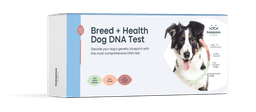Introducing cats to other cats or even to dogs can be a challenge. It doesn’t have to all end in tears, though. Here’s our guide on introducing a new cat to your household!
Introducing a New Cat to a Resident Cat
Cats are creatures of habit, so any change, including introducing a new cat, can be disconcerting. This can be especially true if you’re introducing a kitten to a cat. It’s not always clear how to integrate a new kitten into your current cat’s household, especially if you have a senior cat. There are things we can do to make the transition easier and help everyone get along.
Preparing the Home for a New Cat’s Arrival
First, ensure the home is ready for a new arrival. This means getting a room ready for them, with all new toys, bedding, and bowls, and, most importantly, getting a new litter box. PetMD recommends getting a litter box for each cat, plus one extra. This means that cats can have their privacy, and the smell doesn’t affect them (even if it affects us).
Scent Swapping: The First Step
Cats get the majority of their information about each other by smell. To get them used to having another cat around, you can take a sock and rub it over the new cat's head, face, cheeks, and neck (where they release the scents we can’t smell) and give that sock to the old cat to smell. By repeating this with your current cat and giving it to the new cat, you’ve now given them both their first introduction without any visual connection. You can also start swapping fabric items or food bowls from their rooms to start forming a “group scent.”
Visual Introductions: Gradual Exposure
Cats are not pack animals, although some do live in colonies when they have to, so seeing another cat can be a somewhat rare or even dangerous occurrence in the wild. To avoid spooking your cat, begin with gradual visual introductions through closed doors or blanket-covered baby gates that allow the cats to partially see each other. Do this until interactions are happy and calm (but do leave some leeway for excited kittens!).
Supervised Face-to-Face Meetings
The next step always feels like a significant milestone, and that’s letting them see each other fully. This does not mean flinging open the door and letting them have full access to each other, but taking the blanket off the baby gate and distracting them with toys and treats to encourage positive associations. They are allowed to be curious and calm but try to avoid agitation, and sessions should be ended early if people or animals are getting too stressed. Cat fights should be immediately broken up (safely, use a pillow or a blanket, not your bare hands), and go back to your last step. This means if they were having supervised visits, then re-introduce the baby gate. This isn’t the end of the world, rather the cats saying, “I’m not ready for this step yet” and you can try again later.
Increasing Interaction Time and Reducing Barriers
Slowly but surely, you can increase the time together and reduce the supervision. As long as the cats are calm with each other and have space in the house for some alone time, it should all go smoothly.
Introducing a New Cat to a Resident Dog
When thinking about how to introduce a cat to a dog, it’s similar to how we have cats meet. They both rely on smell for information, and they both need reduced visual contact to start with. One thing to keep in mind before introducing cats and dogs is that cats will not understand that your dog is not a cat. To cats, all animals are food or cats, so since your dog isn’t food, it’s a cat. Your dog, however, understands that your cat is not a dog. This “language” barrier can lead to misunderstandings that are up to owners to help resolve.
Scent Introduction: Letting the Dog Smell the New Cat
Like cats, dogs rely heavily on their sense of smell to get information about the animals and things around them. Doing a scent swap and exchanging items that soak in scent can help.
Always ensure items are appropriate and safe to swap, especially with a large size difference.
Visual Introductions with a Barrier
Like with cats, having a barrier up will help both cat and dog adjust to seeing each other, especially if there is a significant size difference between the animals or you have an especially excited dog. Remember, always have treats and toys to hand when doing introductions!
Supervised Physical Introductions
Like when working with cats, you must ensure that both animals don’t get overwhelmed or start showing aggressive behaviors in these meeting sessions. Introductions like this should be made in a common area with the dog on a leash for control. When introducing them, have both animals be brought into the room, letting them explore the room and play with toys, with treats being given out for good behavior. Curiosity and calmness should be encouraged, whereas signs of stress mean that the session may need to end early.
What to watch for: signs of stress or aggression
In cats, stress can be shown through puffing up their coat and hissing at the dog. Dogs may show aggression by being overly fixated on the cat, lip licking, growling, and tucking their tail underneath themselves. For dogs, if you’re unsure, you can use a tool called the Ladder of Aggression/Communication, which trainers like Victoria Stilwell reference for stressed dog behavior and how a dog might act.
For the long term, giving cats ways to walk around a room without feeling stuck, and making sure that dogs aren’t bored can help the long term harmony in your home.



